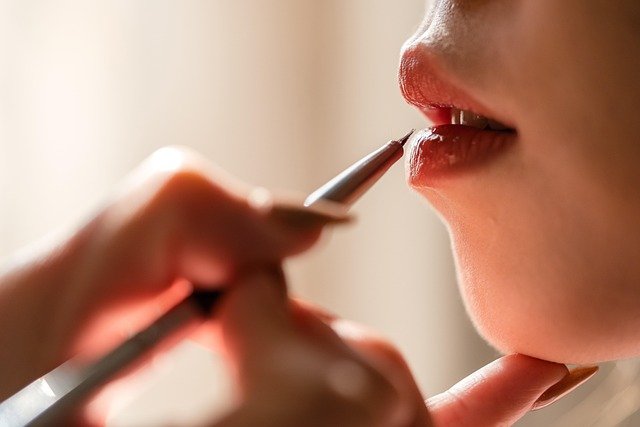The Art of Contouring: Sculpting Beauty with Light and Shadow
Contouring has become a cornerstone of modern makeup artistry, transforming the way we approach beauty and facial enhancement. This technique, which involves strategically applying light and dark shades to sculpt and define facial features, has roots that stretch back centuries. However, it's only in recent years that contouring has exploded into mainstream popularity, becoming a staple in both everyday and red carpet looks. The rise of social media, particularly Instagram and YouTube, has played a significant role in democratising this once-professional technique, making it accessible to makeup enthusiasts worldwide. As contouring continues to evolve, it raises intriguing questions about beauty standards, self-expression, and the power of makeup to transform.

In the 1950s and 1960s, contouring became more refined, with makeup artists like Way Bandy developing techniques that would influence generations to come. Bandy’s approach focused on enhancing natural features rather than dramatically altering them, a philosophy that continues to resonate in modern contouring practices.
The Kardashian Effect and the Contouring Boom
While contouring had been a staple in professional makeup artistry for decades, it was the Kardashian-Jenner family who catapulted the technique into the mainstream consciousness. Kim Kardashian, in particular, became synonymous with the heavily contoured look in the early 2010s. Her makeup artist, Mario Dedivanovic, shared detailed tutorials and behind-the-scenes glimpses of Kim’s contouring routine, sparking a global obsession with the technique.
This newfound popularity led to a surge in contouring products and tools. Makeup brands rushed to release contour kits, palettes, and specialised brushes to meet the growing demand. The market saw an influx of cream, powder, and even stick contour products, each promising to deliver that coveted sculpted look.
Techniques and Tools of the Trade
Contouring techniques have evolved significantly since the early days of stage makeup. Modern contouring typically involves three key steps: highlighting, contouring, and blending. Highlighting involves applying lighter shades to areas you want to bring forward, such as the centre of the forehead, under the eyes, and the bridge of the nose. Contouring, on the other hand, uses darker shades to create shadows and define areas like the hollows of the cheeks, the sides of the nose, and along the jawline.
The tools used for contouring have also become more sophisticated. While traditional makeup brushes are still widely used, beauty blenders and specialised contouring brushes have gained popularity for their ability to create seamless, airbrushed finishes. Some makeup artists even use unconventional tools like spoons or playing cards to achieve precise contour lines.
The Science Behind the Sculpt
At its core, contouring is based on the principles of light and shadow. By manipulating how light reflects off the face, makeup artists can create the illusion of altered bone structure and facial proportions. This technique taps into our innate ability to perceive depth and dimension, tricking the eye into seeing a more sculpted face.
Research in the field of perceptual psychology has shown that facial contrast plays a significant role in how we perceive age, health, and attractiveness. Contouring essentially increases this contrast, which may explain why many people find contoured faces more appealing. However, it’s important to note that beauty ideals vary across cultures and individuals, and the heavily contoured look isn’t universally embraced.
The Backlash and the Rise of ‘Natural’ Contouring
As with many trends that reach peak saturation, there has been a backlash against heavy contouring in recent years. Critics argue that the technique promotes unrealistic beauty standards and can lead to a homogenised look, with everyone striving for the same chiselled cheekbones and narrow nose.
In response, a new wave of ‘natural’ or ‘subtle’ contouring has emerged. This approach focuses on enhancing one’s natural features rather than dramatically altering them. Techniques like ‘non-touring’ and ‘strobing’ have gained traction, emphasising a more luminous, less structured look.
Contouring in the Age of Social Media
Social media platforms have played a crucial role in the popularisation and evolution of contouring. Instagram, in particular, has become a hub for makeup artists and enthusiasts to share techniques, product recommendations, and before-and-after transformations. The platform’s visual nature and use of filters have also contributed to the popularity of more dramatic contouring looks.
However, the relationship between contouring and social media is complex. While these platforms have democratised access to makeup techniques, they’ve also been criticised for promoting unrealistic beauty standards. The rise of ‘Instagram face’ – a look characterised by high cheekbones, full lips, and a narrow nose – has been linked to the widespread adoption of contouring techniques.
The Future of Contouring
As we look to the future, it’s clear that contouring will continue to evolve. Advancements in makeup technology are leading to more sophisticated products that blur the line between skincare and makeup. ‘Smart’ contouring products that adapt to individual skin tones and facial structures are already hitting the market.
Moreover, the growing emphasis on inclusivity in the beauty industry is challenging traditional contouring techniques. Makeup artists are developing approaches that work for a diverse range of skin tones and facial features, moving away from the one-size-fits-all approach of the past.
The art of contouring remains a powerful tool in the world of beauty, allowing individuals to sculpt and enhance their features in ways that were once the preserve of Hollywood stars. As techniques continue to evolve and adapt to changing beauty ideals, contouring stands as a testament to the transformative power of makeup and the enduring human desire for self-expression through beauty.




